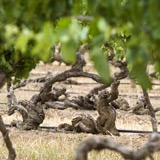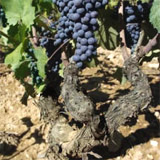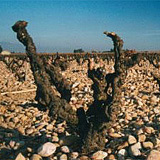To many wine enthusiasts - bush vines (goblet vines) are something unique. Perfectly straight rows - all of uniform height, common place here in NZ - is in fact a recent development. To the rest of the world, many winemakers have only recently thought of moving towards - for their indigenous grapes or new sites that will best suite.
Spain - the country with the largest area of grape vines in the world - it is common place to see low bush vines on the slopes and plains across the arid regions. The bush vines provide a canopy which shades the grapes from direct sunlight. The smaller crop results in smaller berries with thicker skins, and much more concentrated flavours.
The roots of bush vines can grow to 20m deep in search of moisture, making the vines less sensitive to drought (bush vines in any case need less moisture than trellised vines).
Goblet has been used since Roman times, involves no wires or other system of support. The spurs are arranged on short arms in an approximate circle at the top of a short trunk, typically 30 to 50 cm, making the vine resemble a goblet glass. The vines are free standing and the system is best suited to low-vigour vineyards in drier climates.
The goblet is widespread in southern France, Italy, Spain and in Portugal. In many New World countries such as Australia, Chile, South Africa, and California, the traditional and low-vigour goblet-trained vines are often called bush vines.
With low-vigour vineyards the foliage can be relatively erect, but shoots may trail on the ground in high-vigour vineyards, and there can be substantial shade. The system is used widely in many Mediterranean countries and is most suited to low-vigour vineyards. In hot climates this filtered sunlight promotes a slower, more even, ripening of grapes. This system also allows for good air circulation through the canopy, which aids in the prevention of rots and molds due to being so low to the ground. It is generally not used in cooler climates because it can expose grapes to frost.











